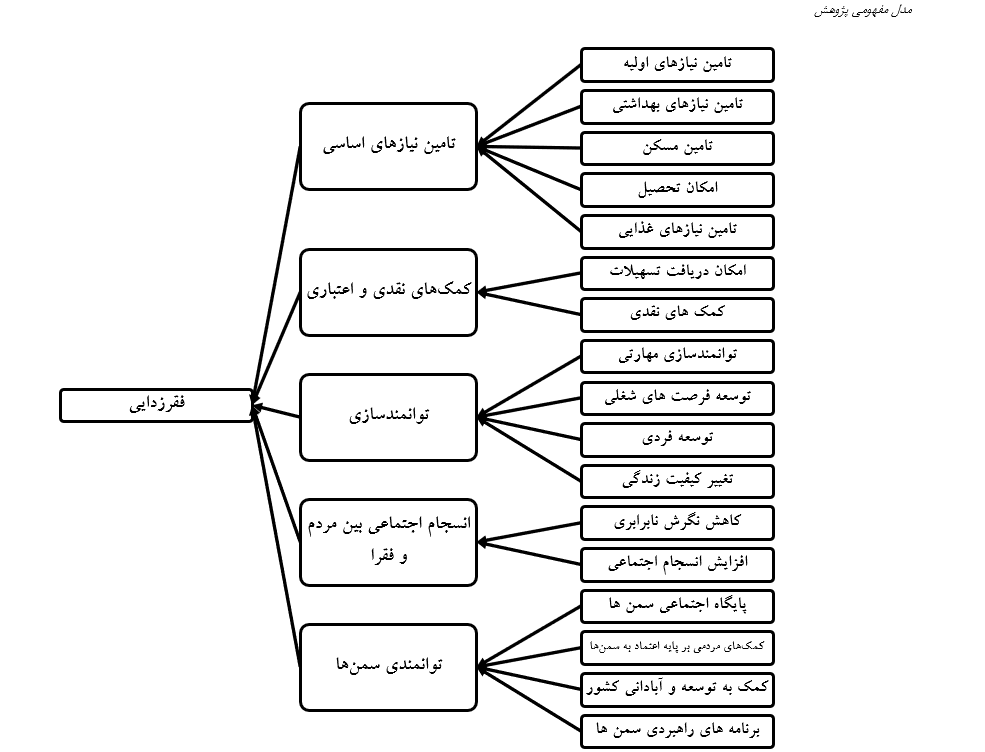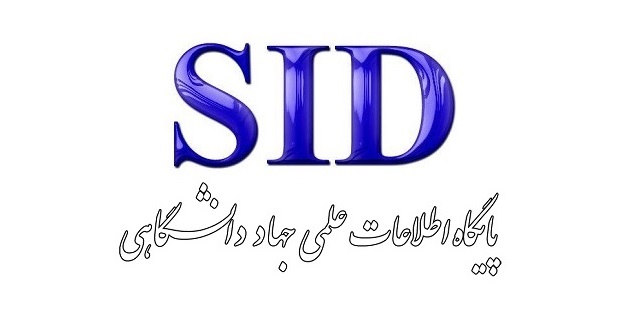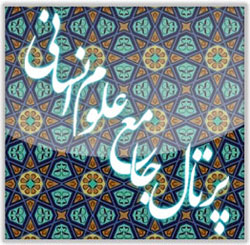The Impact of Socio-Economic Programs of Non-Governmental Organizations on Poverty Alleviation in Iran
Keywords:
NGOs, Poverty, Poverty AlleviationAbstract
This study investigates the impact of the economic and social policies and programs of non-governmental organizations (NGOs) in the area of poverty alleviation in Iran. The research method is grounded theory, and the Strauss-based grounded theory approach was employed for data analysis. The statistical population includes studies, interviews, and discussions related to poverty alleviation initiatives conducted by NGOs and the government. Data were analyzed using grounded theory methodology and coding procedures. The analysis results indicate that five main concepts play a key role in the poverty alleviation process: the provision of basic needs, cash and credit assistance, empowerment, social cohesion between the poor and other segments of society, and the capacity of NGOs. The provision of basic needs, which accounts for 18.72% of the total concept frequency, includes indicators such as access to primary healthcare, housing, and nutrition. This underscores the importance of access to foundational resources for improving the living conditions of the poor. Cash and credit assistance, comprising 11.80% of the identified concepts, serve as immediate tools for poverty reduction. The availability of financial facilities and direct cash support is of critical importance in this area. Empowerment, with a frequency of 38.25%, is identified as the most significant concept in the poverty alleviation process. In this context, skill development and the creation of employment opportunities are key, highlighting the necessity of enabling individuals to improve their economic conditions. Social cohesion between the poor and other societal groups, representing 8.44% of the concepts, contributes to reducing inequalities and enhancing social solidarity. NGO capacity, with a frequency of 22.79%, emphasizes the importance of the social capital of NGOs and their ability to mobilize public support for poverty reduction efforts. This research demonstrates that poverty alleviation in Iran can only be effectively achieved through the coordinated and complementary implementation of these strategies and the optimal utilization of the capacities of both NGOs and the government.
Downloads
References
Abdollahi, M., & Bashiri Mousavi, M. (2015). A Research on the Role of Civil Society Organizations in Poverty Reduction. Journal of Social Welfare, 15(59), 7-37.
Alizadeh, F., & Alizadeh, A. (2021). The Impact of Sustainable Development on Poverty Reduction.
Alkire, S., & Apablaza, M. (2016). Multidimensional poverty in Europe 2006-2012: Illustrating a methodology. OPHI Working Paper(74).
Badko, B., Ghasemi Siani, M., Ranjbarkey, A., Shambiati, M. H., & Shakiba, A. (2022). The Impact of Micro-Credits on Empowerment, Employment Generation, and Poverty Reduction in Local Communities (Case Study: Ahmadi District, Hajiabad County, Hormozgan Province). Geography and Regional Urban Planning, 12(44), 201-226.
Bazzazan, F. A. U. G. A., Raghfar, H., & Hasanvand, F. (2015). Examining the Effectiveness of Government Policies in Reducing Poverty in Iran. Quarterly Journal of Economic Progress Policy, Al-Zahra University, 3(8).
Esmaeil Asadi, R., & Goodarzi, M. (2018). The Impact of United Nations Development Programs on the Development Programs of the Islamic Republic of Iran. International Relations Studies Quarterly, 11(43), 47-49.
Firoozi, F., Seddigh Orouei, G. R., & Asgharpour Masouleh, A. R. (2021). Poverty Reduction as One of the Main Axes of the General Policies of the System: A Systematic Review of Policies and Programs from 2005 to 2020. Strategic Macro Policies, 9(36), 798-827.
Ghorbanizadeh, V. (2015). Analysis of Issues in Implementing Administrative Policies. Strategic Management Studies Quarterly, 6(24), 67-96.
Kamali, A. (2000). An Introduction to the Sociology of Social Inequalities. SAMT.
Mirahssani, M. (2009). A Look at the Structure and Function of the United Nations. Economic Journal - Monthly Review of Economic Issues and Policies(93), 103-119.
Moore, W. A. (2017). Social Change. SAMT.
Myrdal, G. (1987). Asian Drama (A Research on the Poverty of Nations). Amir Kabir.
Nikpour, A. A. U. S. M., & Mohammadiari, B. (2020). Spatial Pattern of Factors Influencing the Formation of Poverty Zones (Case Study: Khorramabad City). Urban Economics, 5(1), 113-126.
Ra'is Dana, F. (2000). Below the Poverty Line in Iran Poverty in Iran. University of Welfare and Rehabilitation Sciences.
Rey Shahri, M. (1998). Mizan al-Hikmah, al-Tanfih al-Thani. Islamic Culture Publications.
Santos, M. E., & Villatoro, P. A. (2018). Multidimensional Poverty Index for Latin. America. The Review of Income and Wealth, 64(1). https://doi.org/10.1111/roiw.12275
Seifi, A., Sadeghi, H., & Masaeli, A. (2019). The Role of the United Nations Development Program in Poverty Reduction with Emphasis on Women's Empowerment in Iran: Opportunities and Challenges The Relationship between Economic Growth and Income Distribution with the Trend of Poverty in Iran Using a Fuzzy Approach. Social Work Research Journal, 5(20), 193-233.
Sen, A. (2000). Development as Freedom. Anchor Books.
Sunizi, P. (1979). Theory of Capitalist Evolution. Nekapo Publications.
Tossoli, G. A. (1992). Sociological Theories. SAMT.
Word Bank. (2002). Globalization, growth, and poverty, building an inclusive world economy.
Zarean, M., Zarei, M., & Honardoust, A. (2018). Empowering Female-Headed Households with Emphasis on the Fourth, Fifth, and Sixth Development Programs of the Islamic Republic of IranJO - Women in Development and Politics. 16(2), 319-338.

Downloads
Published
Submitted
Revised
Accepted
Issue
Section
License
Copyright (c) 2025 Zahra Hajizadeh (Author); Khalil Mirzaee (Corresponding Author); Majid Radfar (Author)

This work is licensed under a Creative Commons Attribution-NonCommercial 4.0 International License.







